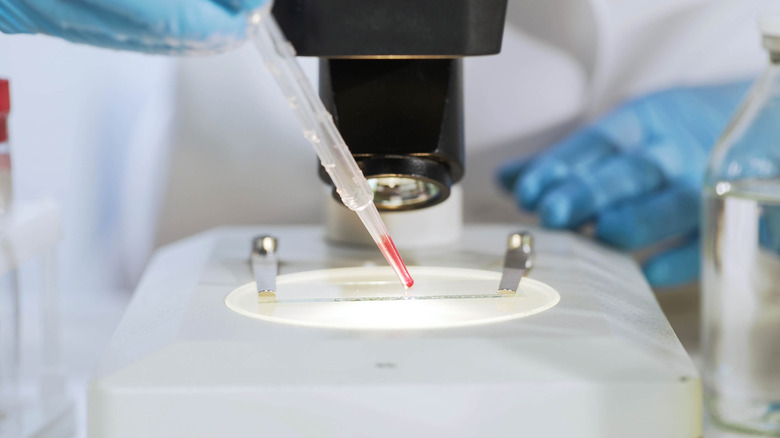Role Of Enzymes In Cellular Respiration
Cellular respiration is the process by which cells convert glucose (a sugar) into carbon dioxide and water. In the process, energy in the form of a molecule called adenosine triphosphate, or ATP, is released. Because oxygen is required to power this reaction, cellular respiration is also considered a type of "burning" reaction where an organic molecule (glucose) is oxidized, or burned, releasing energy in the process.
Cells require ATP energy to perform all of the functions necessary for life. But how much ATP do we need? If our own cells didn't replace ATP constantly through cellular respiration, we would use up nearly our entire body weight in ATP in one day.
Cellular respiration takes place in three steps: glycolysis, the citric acid cycle and oxidative phosphorylation.
Enzymes
Enzymes
Enzymes are proteins that catalyze, or affect the rate, of chemical reactions without themselves being altered in the process. Specific enzymes catalyze each cellular reaction.
The main role of enzymes during the respiration reaction is to assist in transferring electrons from one molecule to another. These transfers are called "redox" reactions, where the loss of electrons from one molecule (oxidation) must coincide with the addition of electrons to another substance (reduction).
Glycolysis
Glycolysis
This first step of the respiration reaction takes place in the cytoplasm, or fluid, of the cell. Glycolysis consists of nine separate chemical reactions, each catalyzed by a specific enzyme.
The key players in glycolysis are the enzyme dehydrodgenase and a coenzyme (non-protein helper) called NAD+. Dehydrodgenase oxidizes glucose by stripping two electrons from it and transferring them to NAD+. In the process glucose is "split" into two molecules of pyruvate, which continue the reaction.
The Citric Acid Cycle
The Citric Acid Cycle
The second step of the respiration reaction takes place inside a cell organelle called the mitochondria, which due to their role in ATP production are called "power factories" for the cell.
Just before the citric acid cycle starts, pyruvate is "groomed" for the reaction by being converted into a high-energy substance called acetyl coenzyme A, or acetyl-CoA.
Specific enzymes located in the mitochondria then power the many reactions that make up the citric acid cycle (also known as the Krebs cycle) by rearranging chemical bonds and participating in more redox reactions.
At the completion of this step, electron carrying molecules leave the citric acid cycle and begin the third step.
Oxidative Phosphorylation
Oxidative Phosphorylation
The final step of the respiration reaction, also called the electron transport chain, is where the energy payoff occurs for the cell. During this step oxygen drives a chain of electron movement across the membrane of the mitochondria. This transfer of electrons powers the ability of the enzyme ATP synthase to produce 38 molecules of ATP.
References
- Biology: Concepts and Connections; Neil A. Campbell; 2009
Cite This Article
MLA
Veloz, Liz. "Role Of Enzymes In Cellular Respiration" sciencing.com, https://www.sciencing.com/role-enzymes-cellular-respiration-5466091/. 11 July 2019.
APA
Veloz, Liz. (2019, July 11). Role Of Enzymes In Cellular Respiration. sciencing.com. Retrieved from https://www.sciencing.com/role-enzymes-cellular-respiration-5466091/
Chicago
Veloz, Liz. Role Of Enzymes In Cellular Respiration last modified August 30, 2022. https://www.sciencing.com/role-enzymes-cellular-respiration-5466091/
